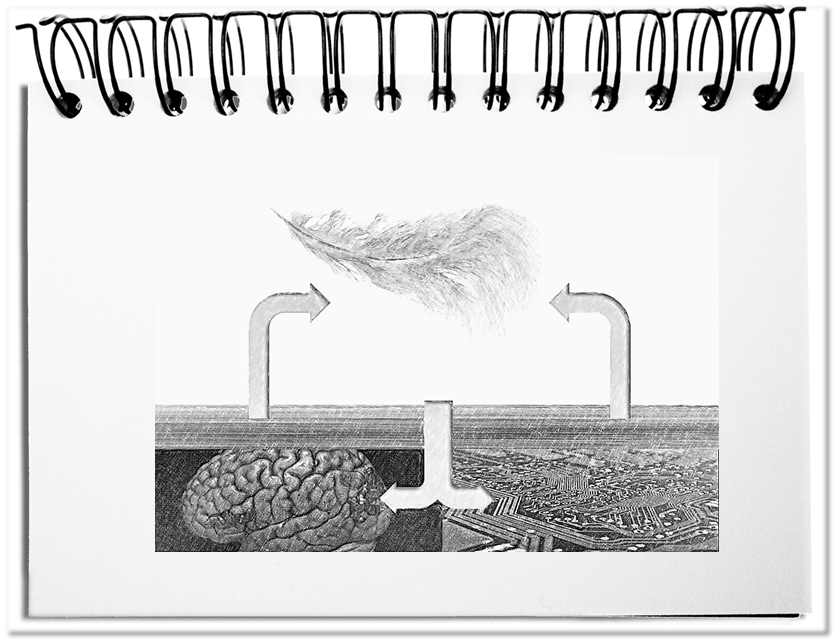We still have no explanation of how we are actually able to think consciously. Already the appropriation by means of We that implies that others think is not a matter of fact. And yet we have a silent agreement that we see, hear, feel, taste, smell and think similarly. But we still do not know how the stimuli of the environment are translated into our mental inner self and how our consciousness evolves. All we got is our ‘Cogito ergo sum’. Nevertheless, we ask whether machines have awareness. Only indirect symptoms are measurable – electrical activations and the observable activities. Through this veil of symptoms, we continue to search.
To penetrate the veil, we have at hand the elements of the world, sensory signals, our own consciousness and the resulting activities and artifacts.
- The world as such
We take the flora and fauna as well as the natural and man-made things for granted. We are convinced that they are, independent of the observer. The philosophical question is: Do the leaves rustle in the forest, even when we are not there to listen?
Such questions can come to our minds without being able to find them in others, also not in other living beings. How could you do that on a computer? - Perceived signals
We perceive the world through the five senses. Thus, the receptors in the eyes receive light that is transformed into mental images, the ears perceive sounds that become music, touches on the skin trigger emotions, delicacies stimulate the tongue and create taste experience and scents we sniff and trigger memories. The individual components can be taken more or less good with measuring instruments. However, the triggered experiences cannot be translated from the measurements.
Of course, we get the signals into a computer. However, we have no idea how to translate the signals into an understanding? - Subjective processing
Nerves transmit the received data from the receptors into the brain. How the signals are translated along the way is unclear. From our own experience, we can certainly confirm that we are aware of our environment. We create images from shapes and colors, which we even recognize in two-dimensional images. High and low, bright and dull, loud and soft sounds become symphonies. The surface of a wooden table feels good. The Madeleine reminds you of the childhood by the sea. The scent of damp grass smells like summer.
There are still no approaches to let mental processing run in a computer – let alone to be able to observe an emerging consciousness. - Visible action
What we observe in ourselves we cannot see in others – at least not directly. We only have the indirect view of the actions of others. We see their body language, gestures and facial expressions, hear their intonation and observe their activities. From this, we derive their mental and emotional state. The visible acts that (presumably) result from their thoughts, only allow interpretations of what is going on in their mind. We observe the consciousness of other people even more indirect than with ourselves.
The processing of a computer can be easily tracked – the results that are displayed on the screen or printed out. This goes so far that we can create three-dimensional worlds in the computer and even print out artifacts.
The feather that we can see and touch triggers feelings that make us, for example, smile. In a computer, one could program a feather that is recognized by a camera and sensed by a sensor to make an artificial face smile on the screen. However, this does not mean that the computer develops feelings, as we have. In the medium term, the fast processing speed will lead to more and more visible actions being trained into the computer. The impression will be that the computer behaves like a human being. Whether it develops consciousness or not, will be hardly recognized, just as with other people.
Bottom line: In artificial intelligence, a lot is still argued with faith. The stimuli that the things of the world trigger will be sensitively measured. The processing in humans will not be transferable in a foreseeable future – especially not as long as we do not know what is happening in our consciousness. However, the programs are becoming increasingly powerful so that they can trigger visible actions as if … Believers can look through the veil and presume that there is consciousness behind. Nonbelievers can think the opposite. For the moment, there is no chance than glimpsing through the veil of symptoms.


